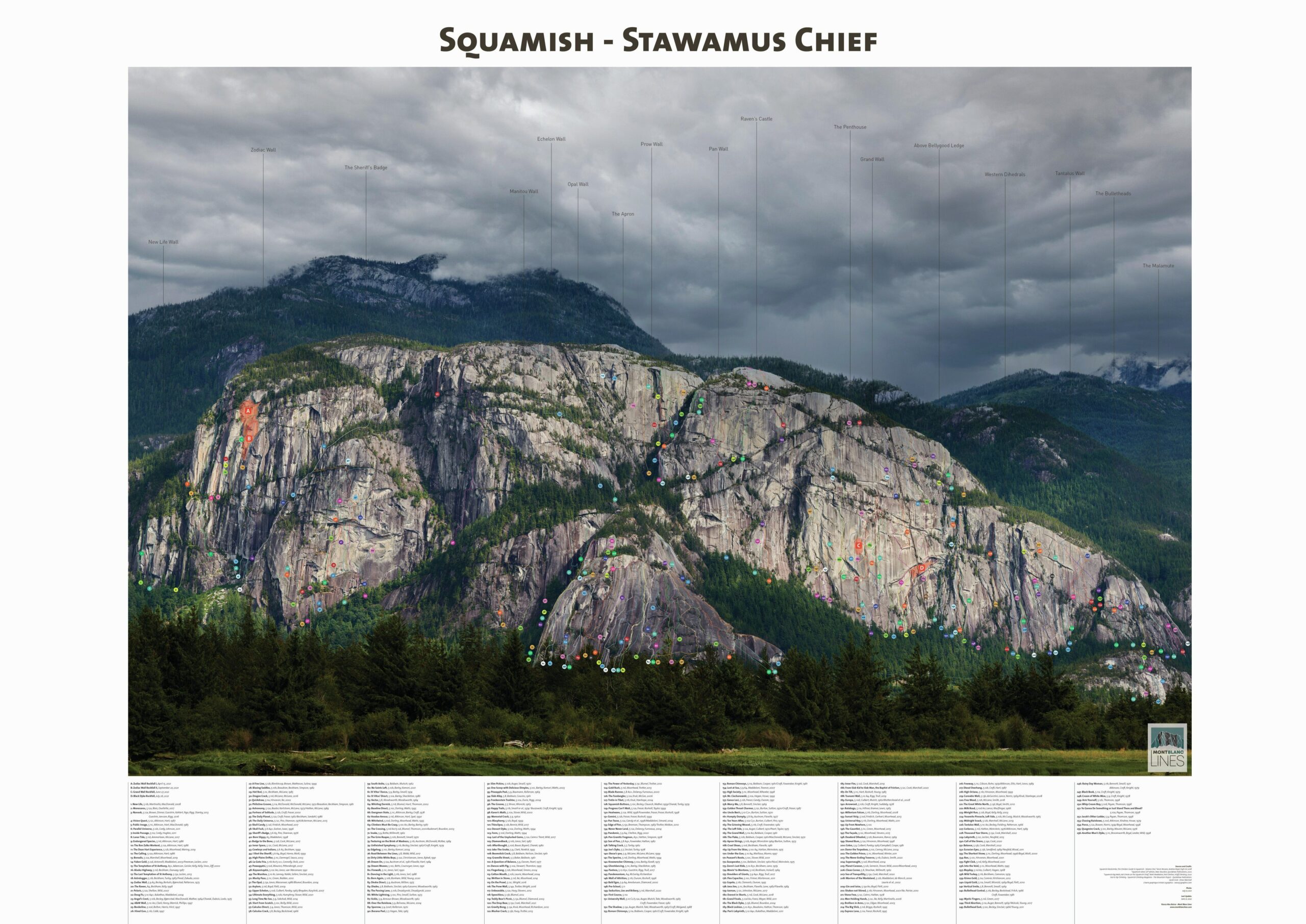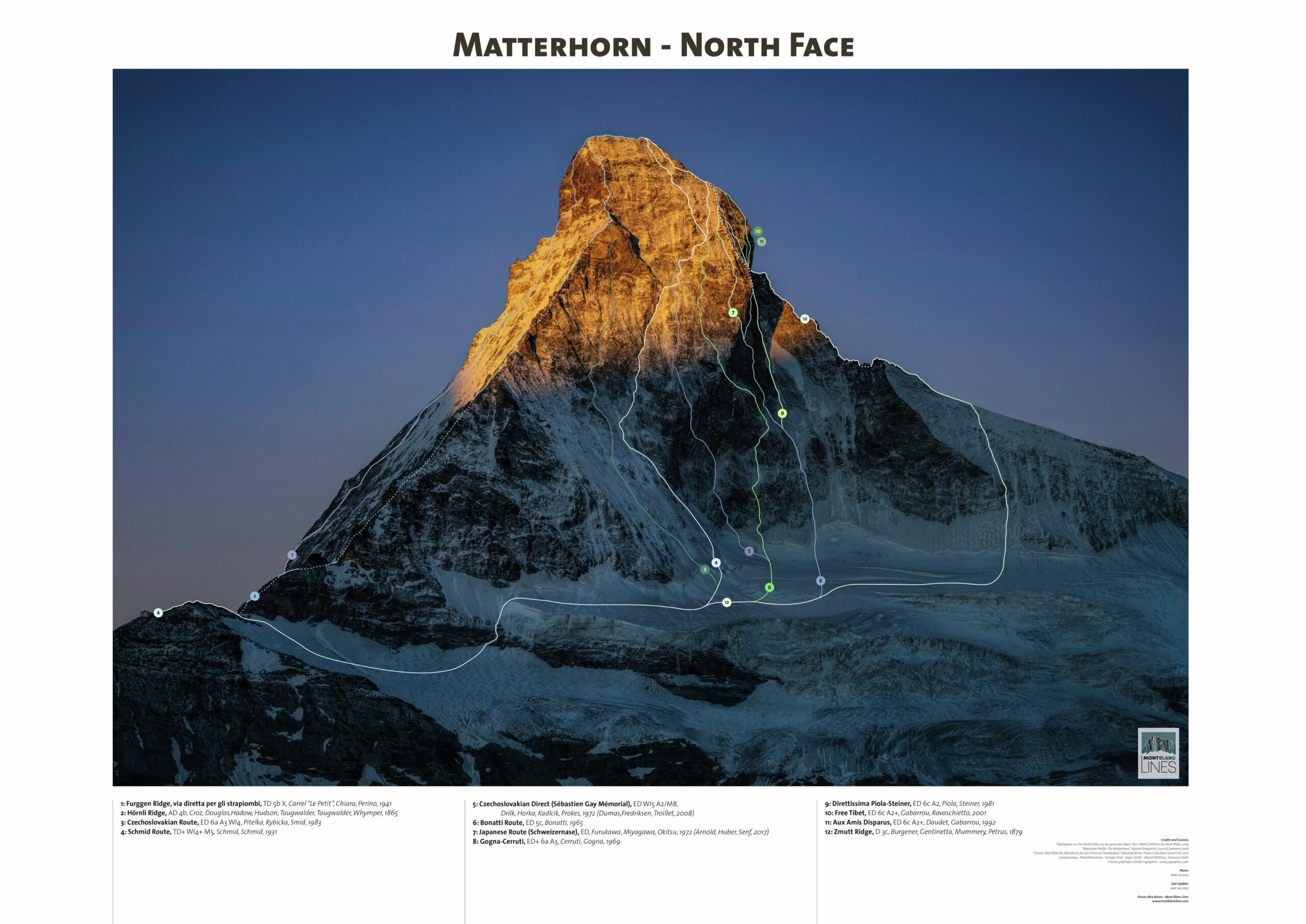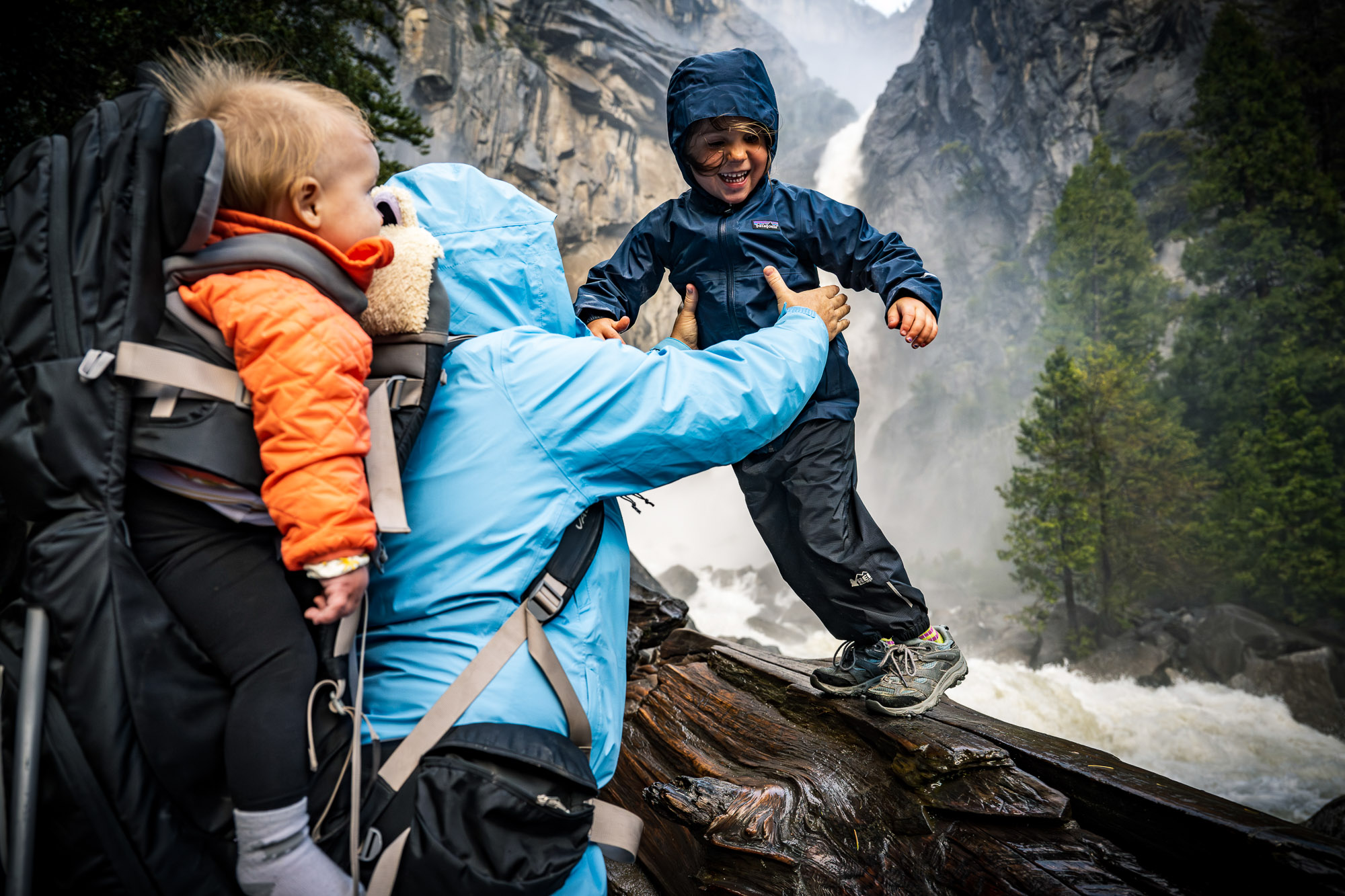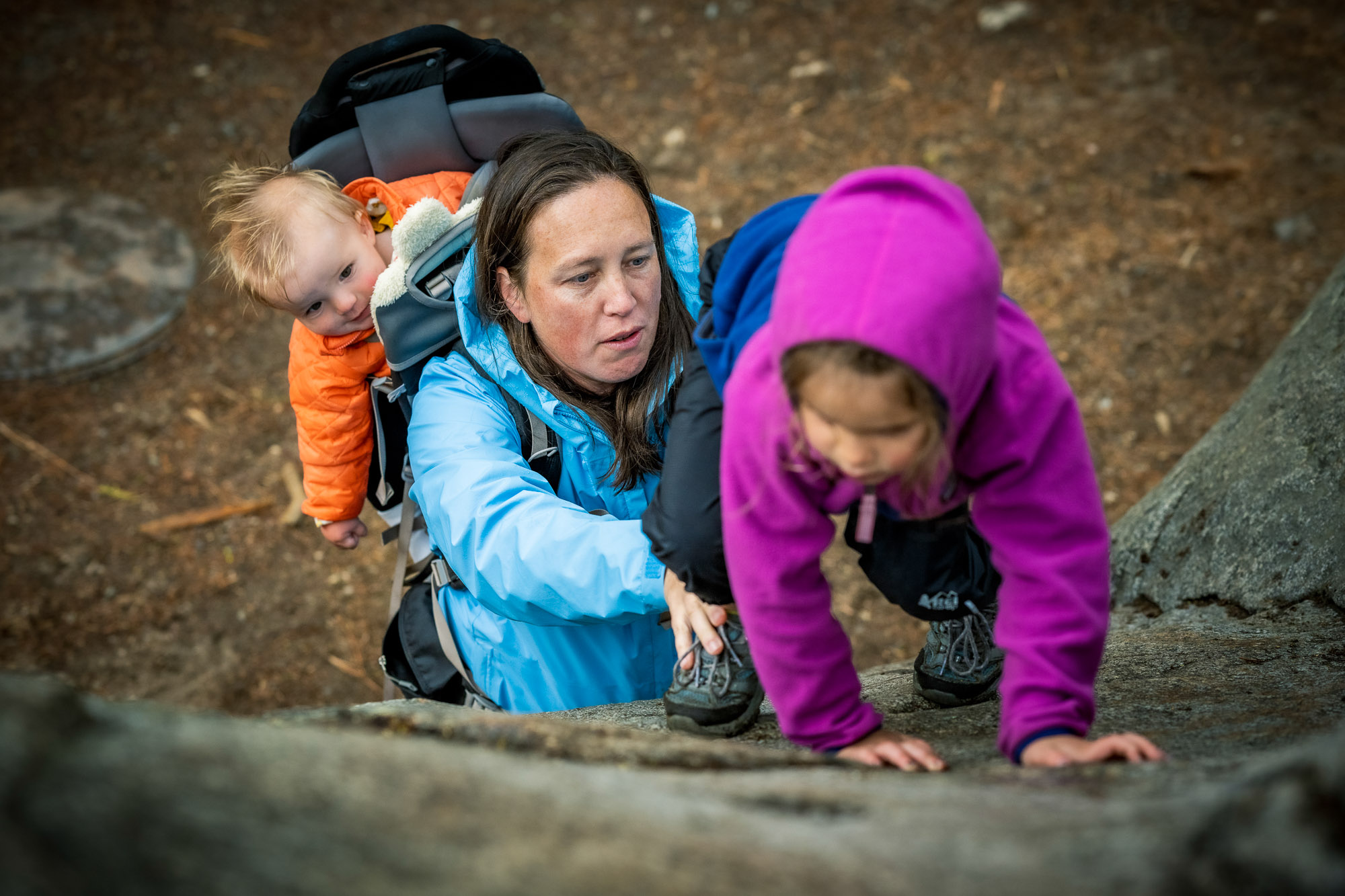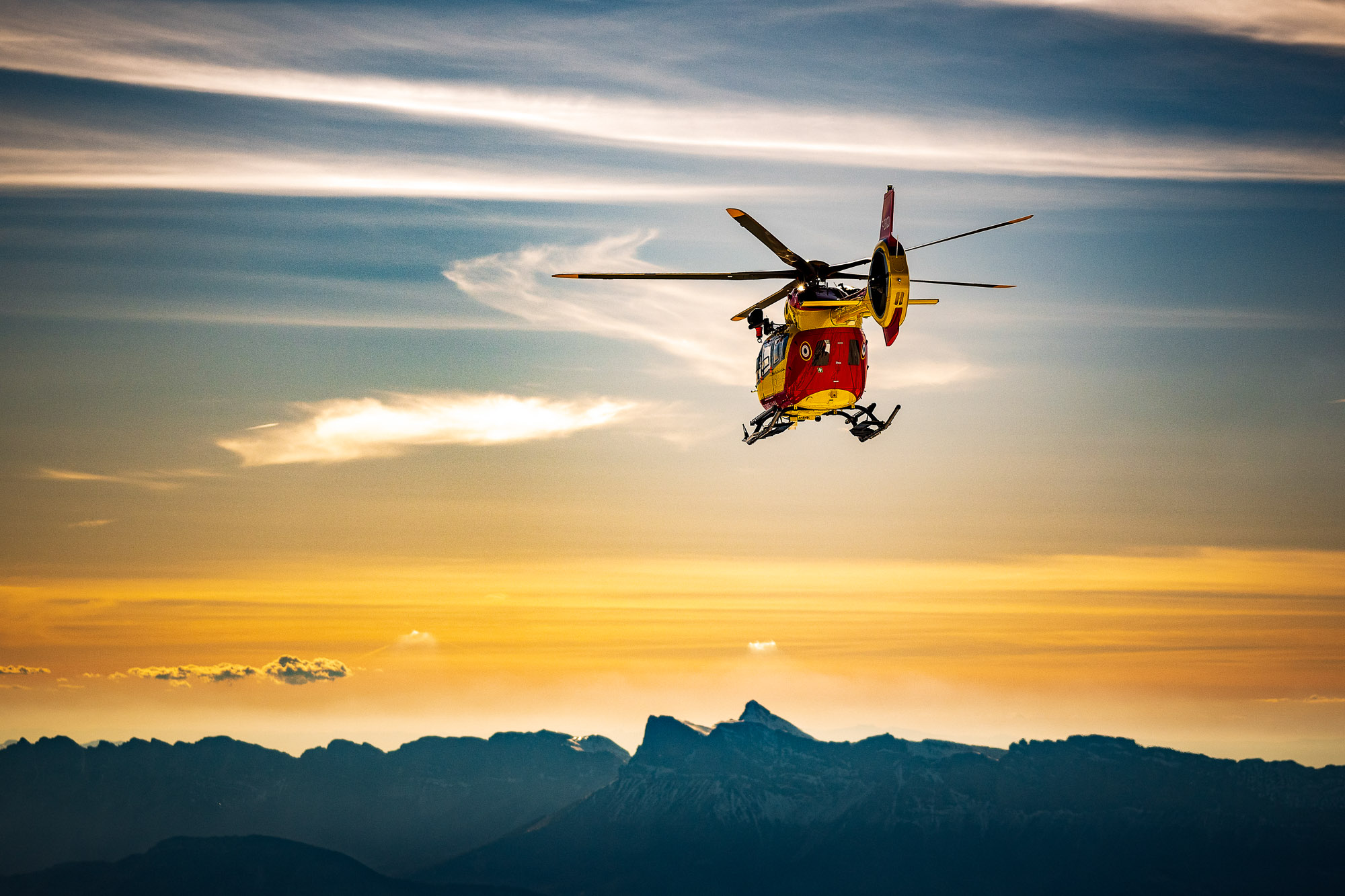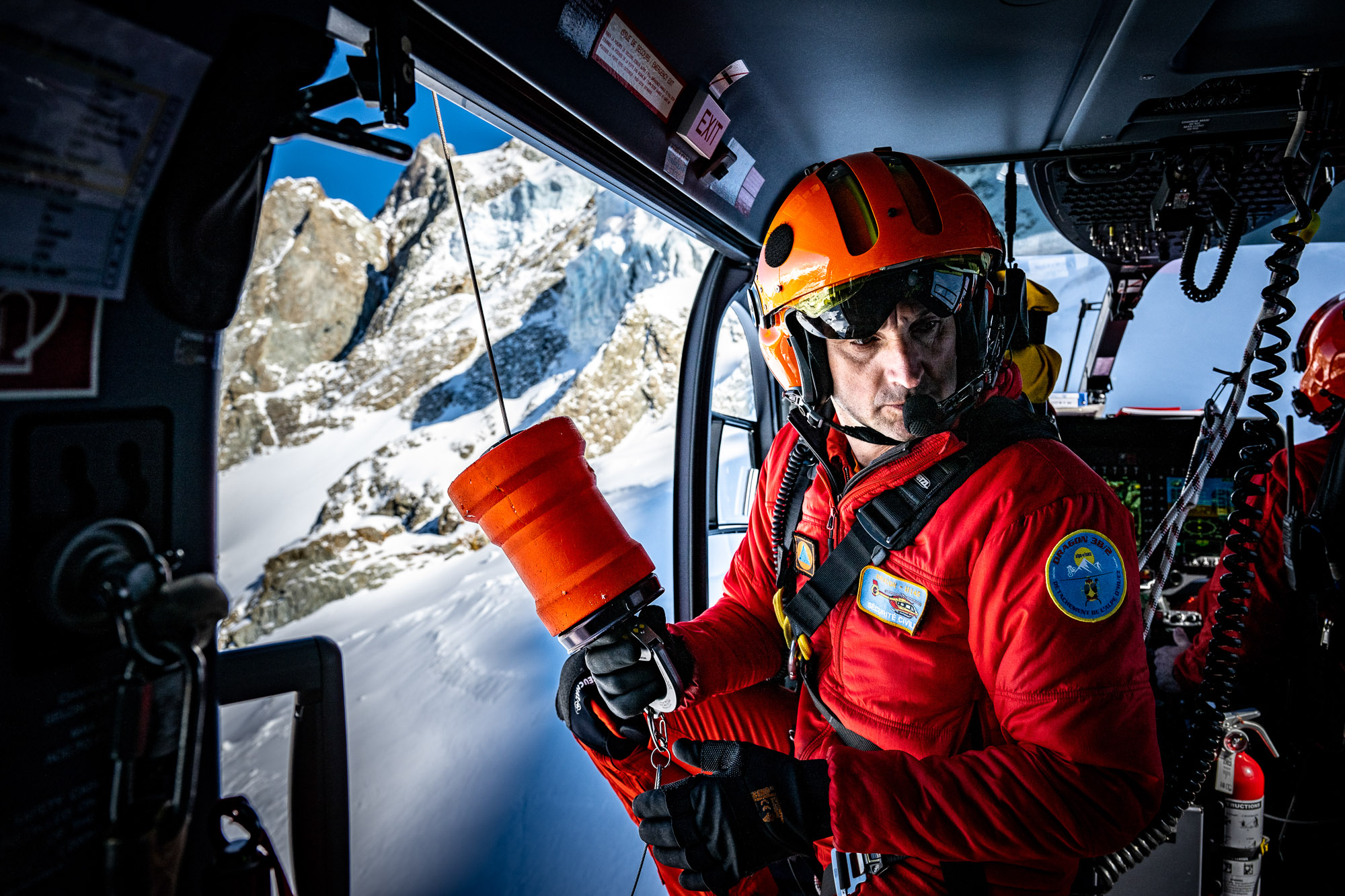The Buisse family plays in the spray of the exceptionally heavy Yosemite Falls.
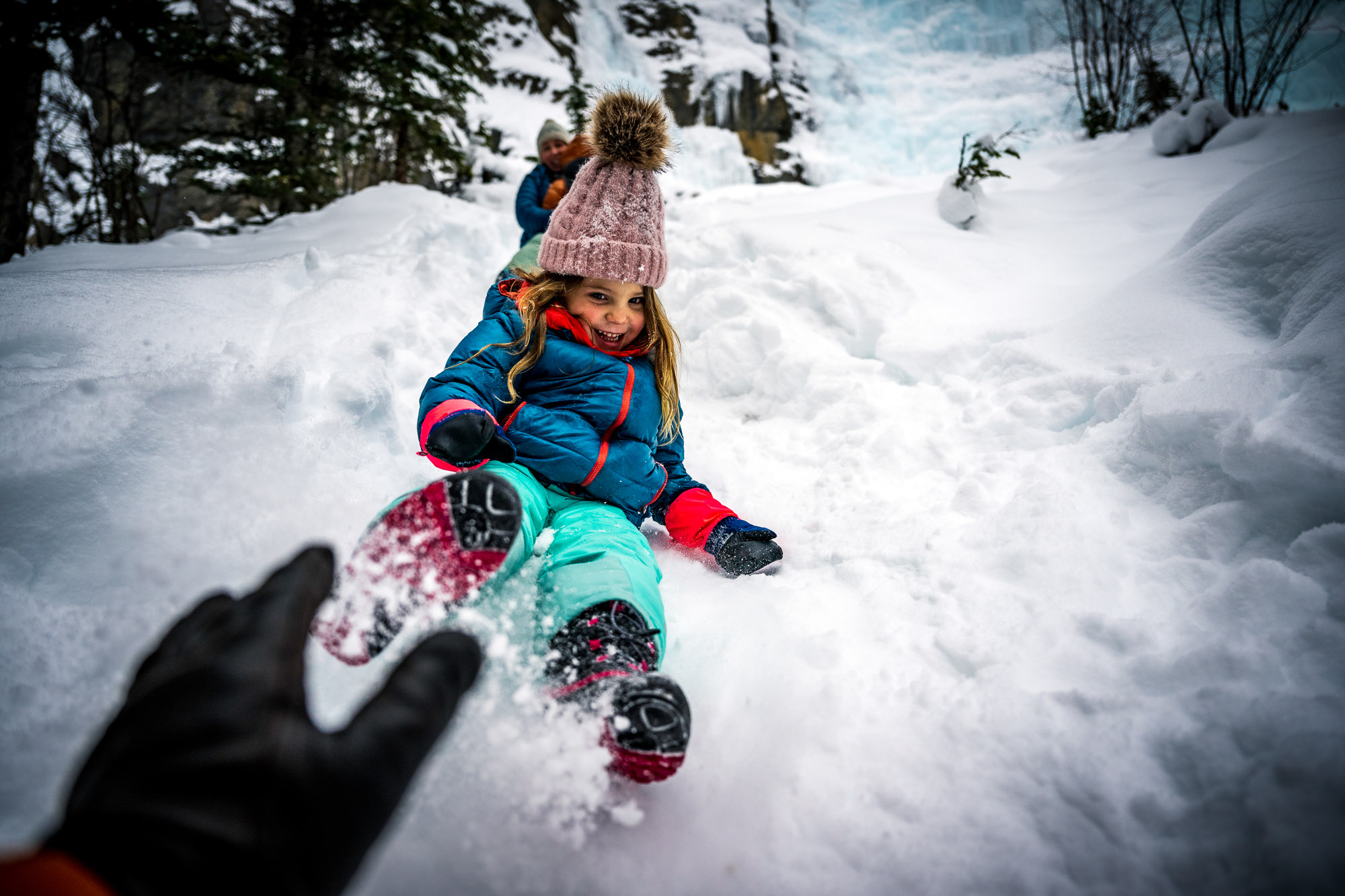
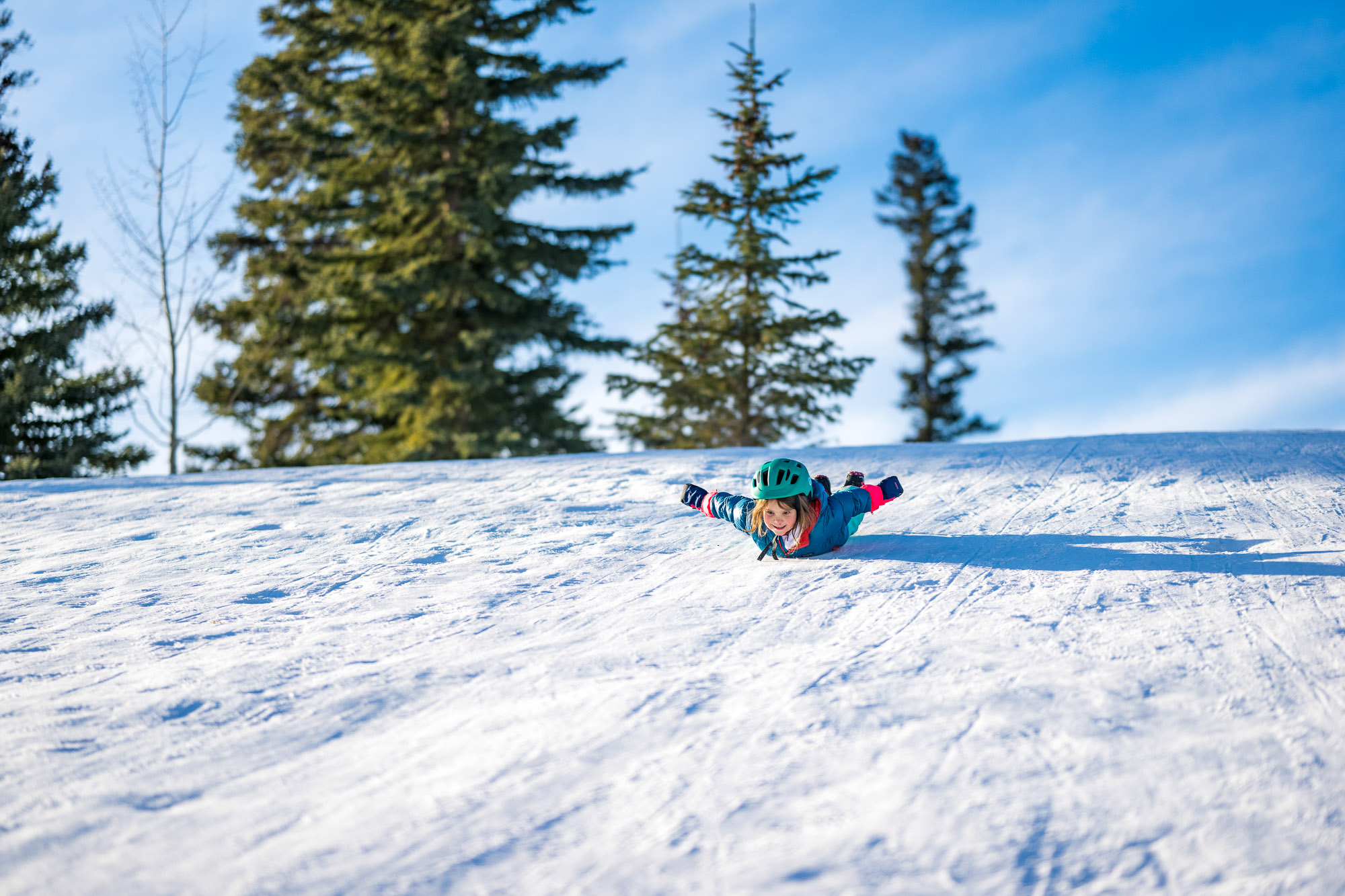
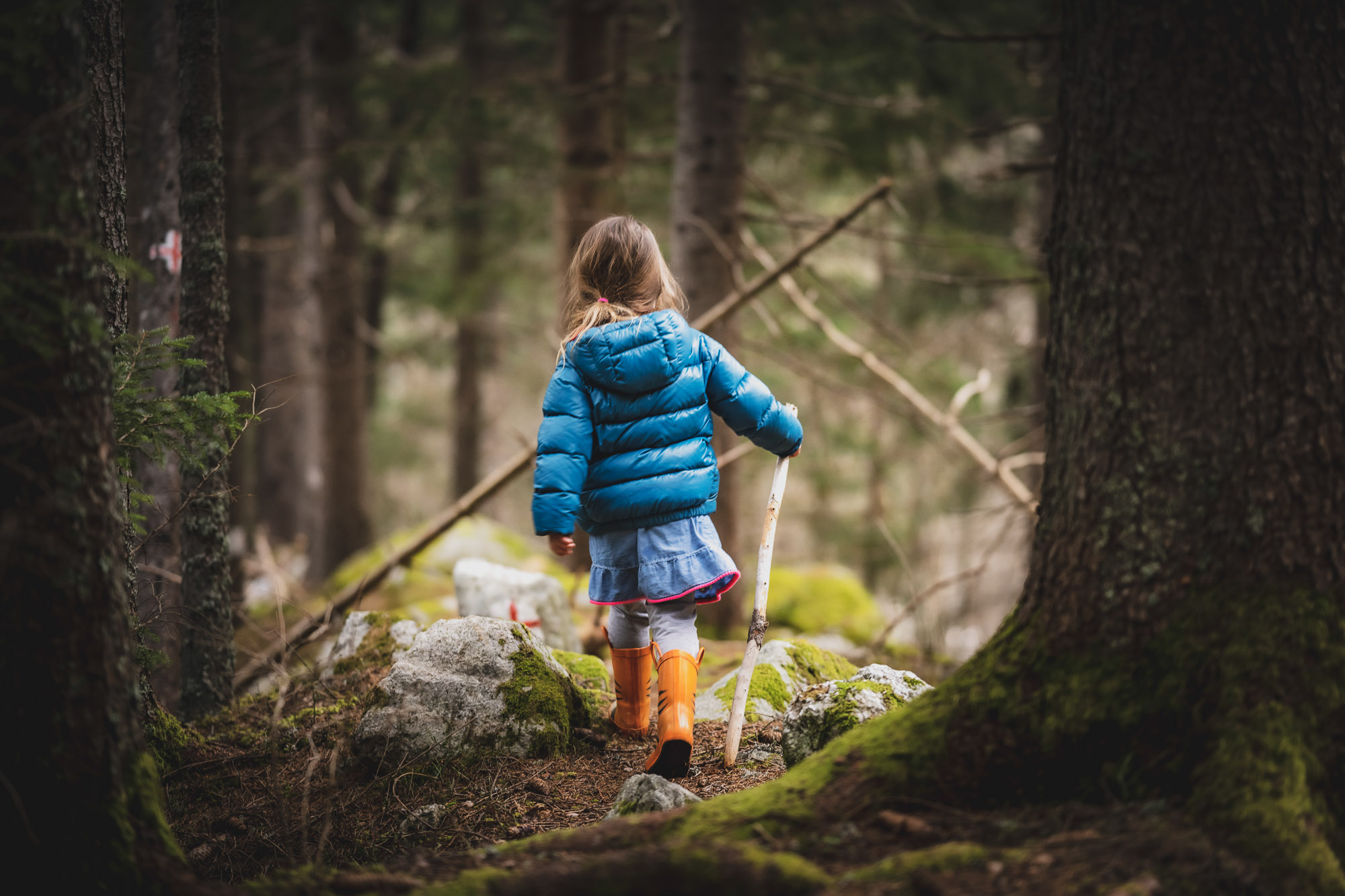
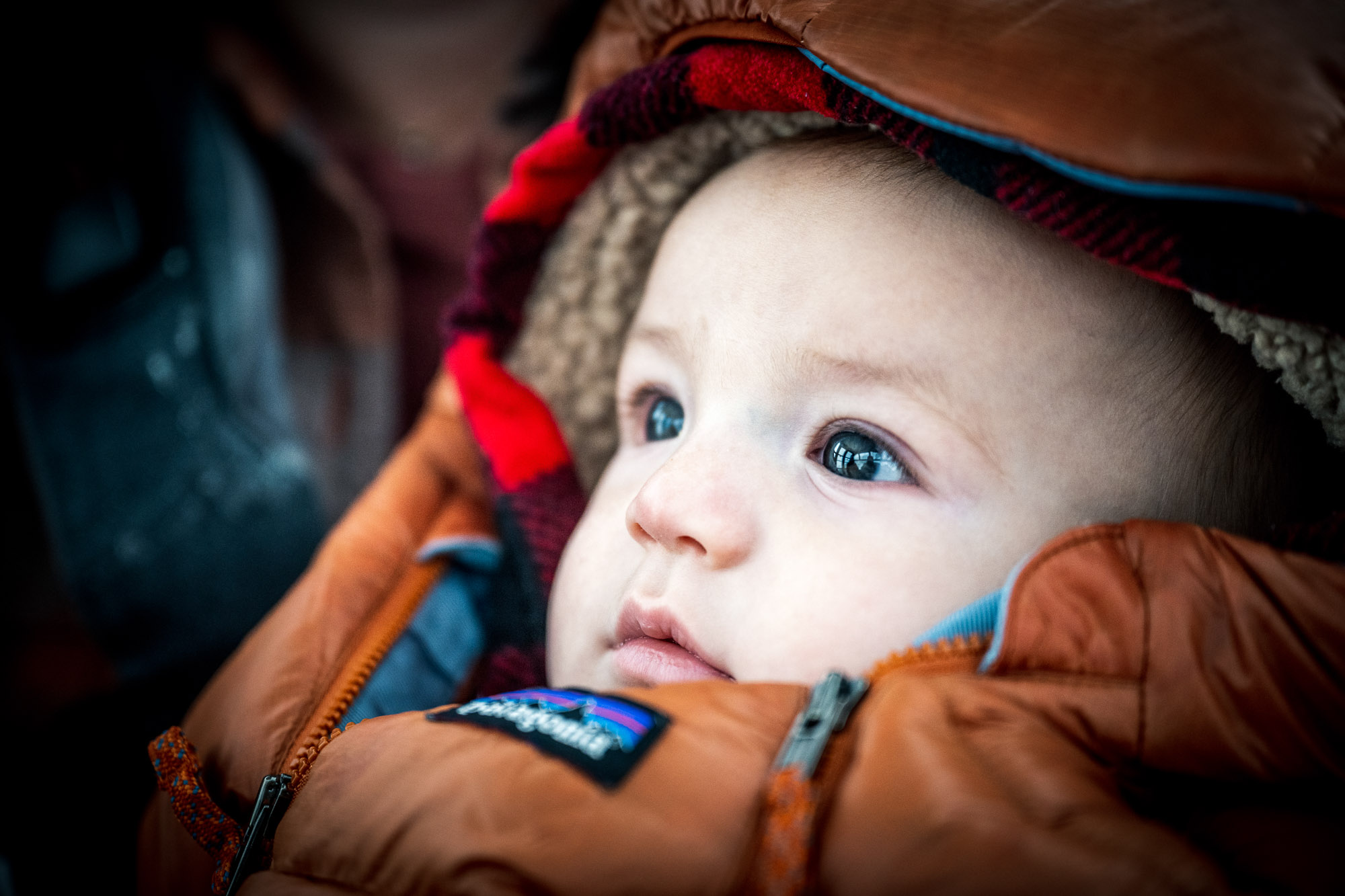 Luca Buisse, 4 months old, heads up Sulphur Mountain in Banff, Alberta, Canada.
Luca Buisse, 4 months old, heads up Sulphur Mountain in Banff, Alberta, Canada.
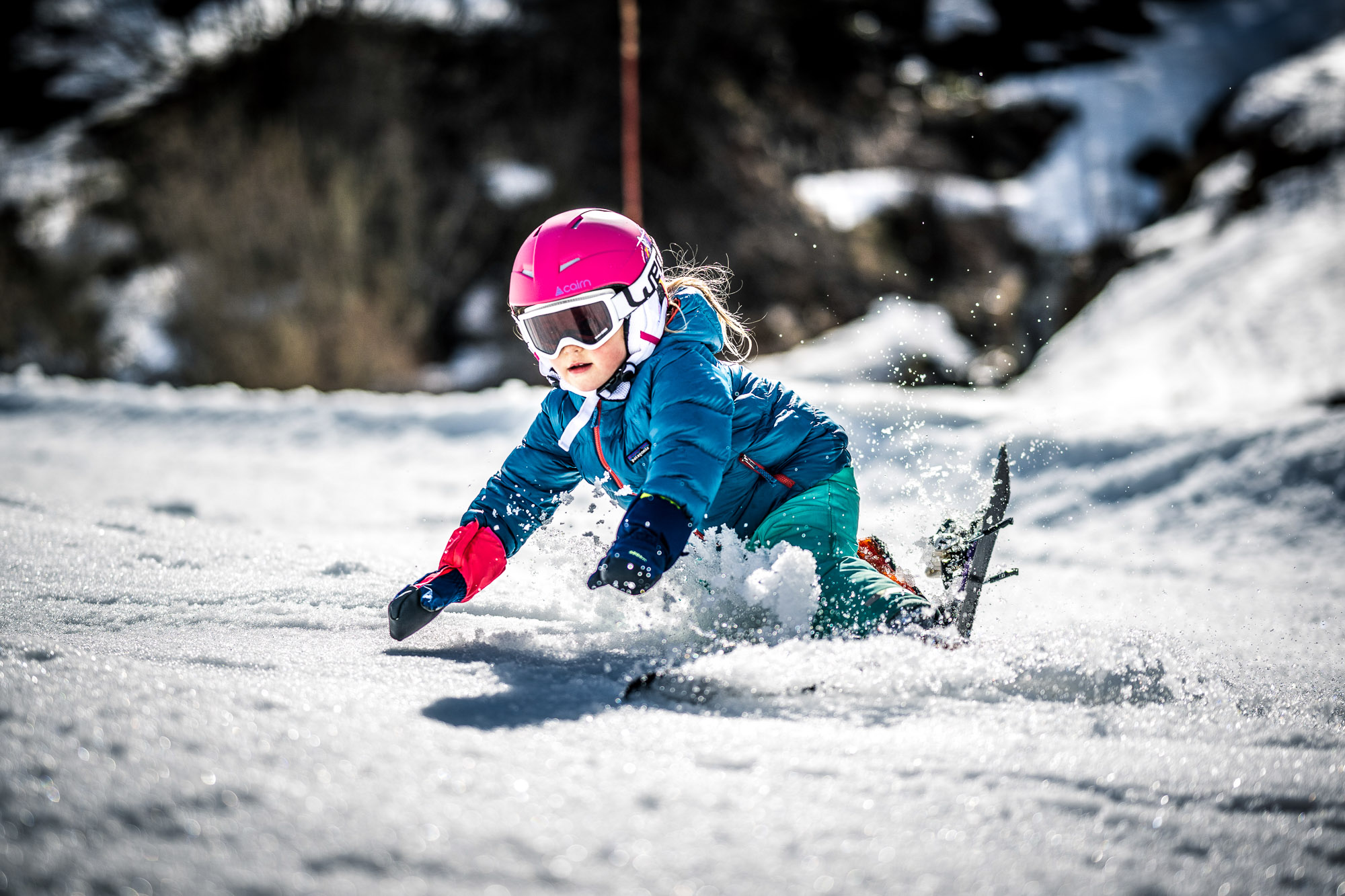
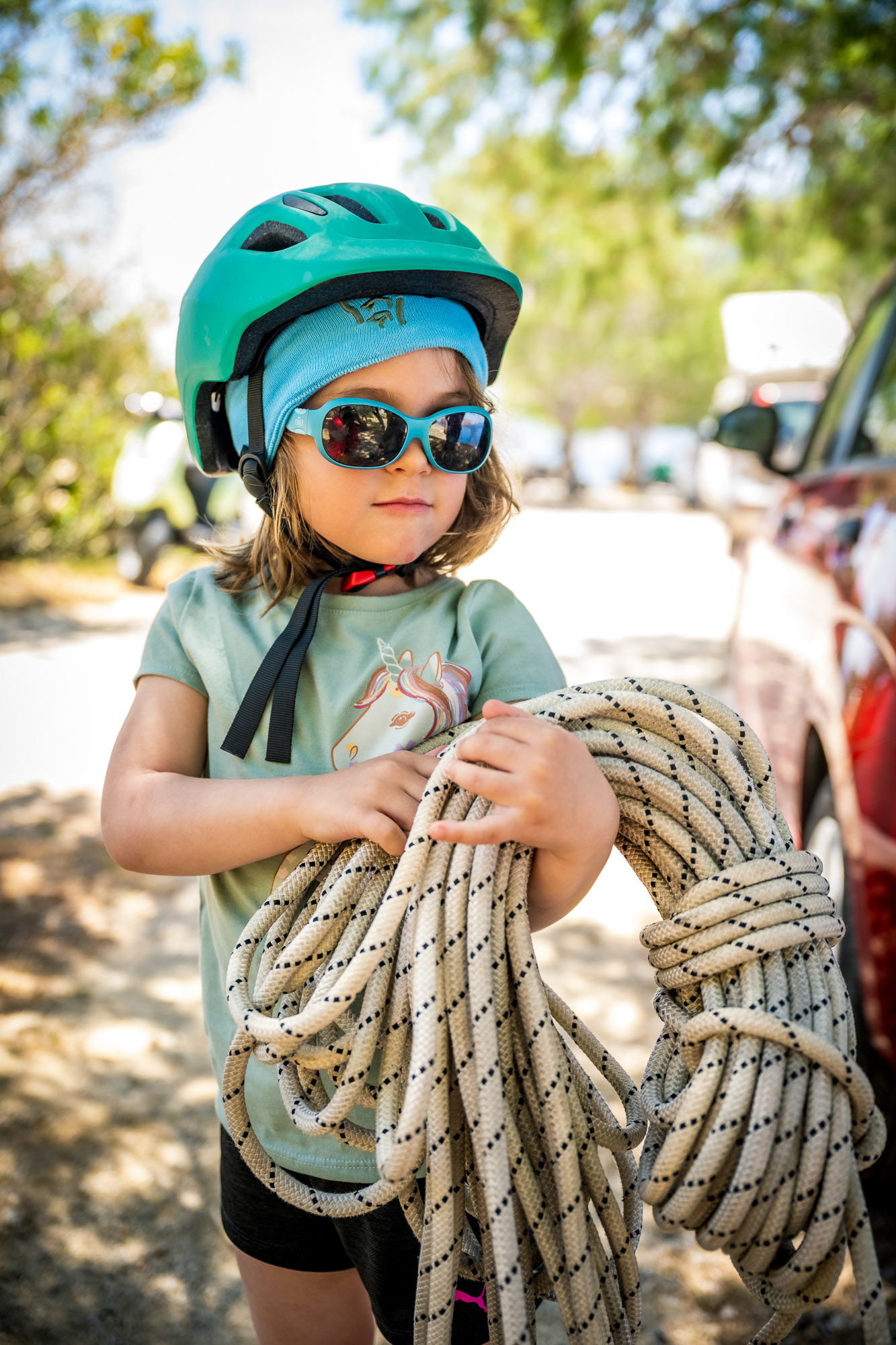
Alex Buisse
Heidi: Congratulations on Mont Blanc Lines , how did this second book come about?
Alex: After I started the Mont Blanc Lines project (drawing climbing routes on high resolution photos of mountains) during the first covid lockdown, the idea of a book came quickly and felt like a natural progression. It was published in late 2021 in French and Italian, with English coming later in 2022, and was extremely well received, with strong sales during the holiday season.
The French publisher, Glénat, felt like the concept, mixing line drawings, action photography, historical overviews and famous climber interviews, could be extended to other areas than just the French Alps. They floated the idea of a world book several times, but I didn’t feel like I was in a position to say yes. Finally, around Christmas last year, with our lease in the Canadian Rockies coming up for renewal and one last year before our daughter Emma had to be enrolled in school full time, we felt like it might be the right time for a family round-the-world adventure.
Is the photo direction evolving from the first book?
The first book relied on a decade worth of photos I had shot while working as an adventure photographer in Chamonix. For this new book, however, I won’t be able to spend weeks and months gathering landscape and action shots of each location. I have made the decision to focus on getting the best possible base images to draw the lines, and will have to license some images from other local photographers to fill in some of the blanks. Thankfully, there are tons of talented people working in the adventure domain right now.
I know you originally declined, what was your hesitation?
The main hesitation revolved around finding the time to visit and photograph enough places. I didn’t want the world to be the US, Canada and the Alps. Since we decided to spend a whole year on the road, we will have time to see some of the climbing areas everywhere: Namibia, Chile, Venezuela, China, Tasmania, Madagascar, Jordan and many more places are on the list.
We also had concerns about how long it would mean being away from my family, until we realized that it was possible to do almost everything all together, perhaps going solo the last technical mile or two. The main exception would be the Himalayas, as the kids are still too young for trekking at high altitudes.
Two young children, two working parents on a world tour, what were the ingredients to say yes?
The book feels almost like an excuse to go have a grand family adventure. We have done enough traveling already to know that adding the needs of a four year old and a 10 month old, on top of our full time work (and Erin’s PhD!) and all the regular constraints of traveling, is a huge and exhausting challenge. But we also felt strongly that sharing this fast-changing world with our children and having adventurous lives was more important than ever. It’s just that what used to mean skiing to the north pole or going on Himalayan expeditions is now hiking to Lower Yosemite Falls or car camping in Moab.
We also had to find ways to make the logistics work, which means basing ourselves in a single place for weeks at a time rather than constantly be on the move. This allows us to slow down, catch our breath, catch up on work, and get to know the places better. We just have to be laser focused on the important spots, and not try to be tourists and see everything.
How has your photography evolved now that you are a parent?
Even before having children, my photography has been on a steady shift toward the more human aspects of adventure, at times turning away from the grand and wild landscapes to refocus on gazes and emotions. Having children has accelerated that process and forced me to slow down and really take in every fleeting moment. I am still a visual storyteller at heart, but with children am finding myself telling smaller and more intimate stories. I am constantly trying to capture my children just being themselves, and I think there is real beauty in that.
What are your hopes for kids during this time?
Emma loves nothing more than being outside and exploring, getting dirty and occasionally falling down from rocks and trees. We want to encourage that as much as possible, and through the red line of our book as well as our natural inclinations, gravitate to the wild places of the world. Our kids will have plenty of time to sit down in a classroom (or in front of a computer) when they are a little older, but for now we just want Emma and Luca to explore the world with us.
We also want them to meet and interact with people from all different cultures, and prioritize trying to get Emma playing with other kids, even if she has just met them.
How has being with your kids shifted how you approach making images?
To state the obvious, kids don’t take direction very well (mine certainly don’t), and I wouldn’t want them to act differently just because the camera is there anyway. It really is about being in the moment, interacting in a natural way, then noticing the little thing that give me a hint that something might be happening very soon, then managing to get a camera pointed in the right direction.
Before photographing children, I would naturally gravitate to choosing the right background, usually some epic mountain scene, then finding a way to get my subjects in front of that. With kids, not only is that exponentially harder to achieve, but it doesn’t lead to images that make sense, as they don’t relate to the landscape in the same way as us. When we were in Yosemite last week, El Cap held Emma’s attention for all of 30 seconds, while she spent a solid hour on a 10 foot tall boulder at the trailhead.
I also love hiking has completely changed. We just don’t go very fast, or cover much ground at all, but we notice so much more than I had become used to. And I have also learned that trying to hurry because “papa is going to miss the light if we don’t keep going right now” is not a recipe for a happy family…
How has your career as an alpinist influenced your photo opportunities outside of outdoor photography?
I am always on the lookout for stories that involve the outdoors and are more than about just the adventure itself. One aspect I have been fascinated with for a long time has been mountain rescue, especially as we are lucky to have some of the best trained and most professional units in the French Alps. I started following the PGHM unit in 2015, spending four weeks embedded with them, and am doing a follow up this year. My experience as a climber gives me some legitimacy in this universe, as the rescuers don’t feel like they have to babysit me constantly, and it gives me opportunities to really follow them in the heart of the action. It feels great to flex my photojournalism muscles once in a while, and there is something special about capturing the raw emotions of a dangerous rescue.
In a totally different direction, something else I am trying to push right now is using my climbing skills and comfort working at height to do more industrial work. My ideal goal would be to focus on the infrastructure of renewable energy, especially wind turbines, as they neatly intersect with my personal values and, indirectly, with conservation and my love of wild places.

